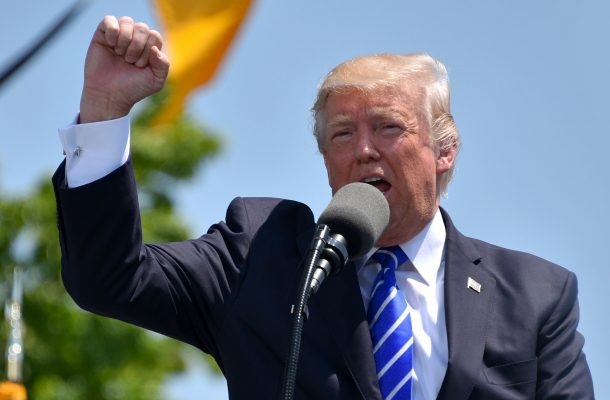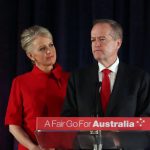Arvanitakis on American politics: Understanding the populist pandemic

The announcement by Donald Trump that his administration would freeze and review all funding to the World Health Organisation (WHO) surprised many and is certainly a dangerous decision while we are all in the midst of a global pandemic.
While far from being perfect, the WHO remains one of the most vibrant and active arms of the United Nations. There is no doubt that in a post-Covid-19 world we need a review of both international health agencies, including WHO, and domestic health systems, to push this point is perilous.
In hindsight, this strategy by the President should come as no surprise. Both because it reflects his strategy of shifting the blame to others as well as his Administration’s antipathy to global institutions.
More than that, however, is that highlights the way that very core of populist politicians and social movements: setting up a clear divide between a faceless elite and ‘the people.’
American elitism
Throughout the leadup to the 2016 election, the two main leaders from the Democrats and Republicans looked to be Hilary Clinton and Jeb Bush. If we remove the Obama-years, that would have given the USA either a Bush or a Clinton in the White House since 1989.
Even when not in the White House, many of their key appointees have dominated key departments including State and Defence. This dominance of family dynasties confronts the democratic and republican ideals.
Historian of populism, the late Lawrence Goodwyn however, had long argued that this push towards American dynasties is not an anomaly. Drawing on Goodwyn, Martine Eiermann argues that American politics has “has long been dominated by an elite that has successfully insulated itself against the whims and tides of public opinion.”
Political participation in the United States is a minority and possibly ‘elite’ phenomenon – averaging at 55 percent for Presidential elections throughout the twentieth century. This creates a circular logic: both those running for office and those committed to voting tend to come from specific parts of the population – and as such, excludes most others.
In a country like Australia where voting is compulsory, we increasingly feel that the political class is further removed from our everyday experiences. In the USA, this feeling is amplified.
The essence of populism
As noted above, the essence of populism is the claim that there is a clear divide between an elite and the people. Importantly, this must be understood within the specific context.
In Australia, populism takes the form of attacking the ‘globalised, inner-city, latte-sipping, tree hugging elites.’ It is an attack on expert systems such as climate scientists who we are told, are on the ‘United Nations’ gravy train and driven by self-interest.
In the United States, it takes shape through a focus on the Washington bubble: it is why Trump’s claim that American’s must ‘drain the swamp’ resonates. The types of political dynasties described allowed Trump to argue that Washington is captured by these elites who place their interests ahead of the general public.
This is also combined with a strong anti-intellectualism. This is why Donald Trump may be comfortable having Dr Anthony Fauci, who is leading the fight against COVID-19, share the stage with him but also why the President has not aligned himself too closely nor protected him from partisan-based attacks.
This leaves the President room to both claim wins in progress against the pandemic as well as distance himself from Fauci as needed. For example, Trump can move to accuse Fauci of not understanding the needs of Americans to get back to ‘normal life.’ Like the WHO, the American medical ‘elites’ can be scapegoats.
Understanding populism
Since the election of Donald Trump and Brexit, there has been an avalanche of books, academic articles and commentary about the rise of populism. Most of these focus on ‘right wing’ populism and fail to mention the left leaning populist governments in throughout Latin America, populist politicians such as Bernie Sanders, or social movements such as Occupy.
With populism regularly identified as a political slur, it is difficult to look for many of us to look into our own political mirror and state that we support a populist position.
Likewise, there is often a tendency to blame social media for amplifying falsehoods why often failing to acknowledge the underlying crisis that has fuelled discontent. This persists even though research projects have found that such claims are overstated.
To understand Trump and the populist agenda more broadly, we must understand its complex dimensions. In surveying the literature, there are four reoccurring themes worth noting:
1. Context
As mentioned above, all populism is context specific. In the United Kingdom, for example, much of the populist anti-Brexit sentiment came from the argument that the government should redirect European Union fees to the National Health Service.
In contrast, in the USA, Trump’s populist campaign focused on the Obama Administration’s attempt to set up a more inclusive health insurance scheme – the Affordable Health Care Act.
That is, we have two similar reactions to two diametrically opposed political positions: one about a socialised health care, the other repelling against it. The type of populism that emerged was similar but driven by two very different starting positions.
It is for this reason that Cas Mudde and Cristobál Rovira Kaltwasser6 describe populism is a ‘thin-layered’ ideology. That is, it lacks substance and must be combined with other political positions ranging from liberalism, socialism and authoritarianism.
2. Leadership
Leadership is fundamental in populist movements but not in similar ways. Sometimes the populist leader can be charismatic and charming, such as Nigel Farage and Bernie Sanders, or clumsy and obstinate in the manner of Donald Trump. At other times, they are simply someone relatable who ‘speaks like us’ – remember Pauline Hanson’s famous ‘please explain’ response to accusations of ‘xenophobia’.
Whatever the character, such a leader captures the political moment and uses it to rally against the above-mentioned elites.
3. Language
Language is also contextual and used differently according to the political positions of the leadership. The right, for example, target immigrants with language that is reflective of insect swarms. Likewise, there is a strong anti-political correctness employed, with the argument that, ‘this is how ordinary people speak.’
For the left, it is one aimed at that elite 1 percent: the business leaders that benefit from a corrupt financial system that puts politicians in the pockets of business leaders. This echoed the position of Syriza, the left-wing anti-EU party that came to power in 2015.
4. Crisis
Finally, we should note that populism does not occur in a vacuum. Crisis, be it real or perceived, creates the environment for populist leaders and movements to emerge.
In fact, populist movements were basically unheard of in Western liberal democracies from the 1950s to the end of the 1990s. For four decades, sustained economy growth throughout the vast majority of the western world ensured that vibrancy of the welfare state.
The social contract between the voting public and both centre-left and centre-right governments was that the welfare state would ensure a safety net, accessible education, healthcare and service provisions. The role of government was job creation and there was an implicit agreement that the lives of our children would be better than ours – like ours were better than of the lives of our parents.
The neoliberal agenda that dramatically altered the role of government in our lives changed this social contract and for the first time, inter-generational improvement is not occurring. In the USA, this has taken shape in many ways including the hollowing out of the working and middle class, decreasing life expectancy for significant sections of the population and precarious living.
We should remember that it was the foreclosures of tens of thousands of homes that continued to propel the Occupy Movement.
There is no doubt that while the economy bounced back, the benefits have not been evenly shared. The seeds of discontent have long been simmering and the Trump campaign took advantage of this – and will continue to do so.
As such, don’t expect Trump to ease back from targeting WHO, Fauci and other ‘elites’ like the Governors of New York and California. And don’t be surprised when other populist-leaning politicians follow the lead. It is a dangerous yet winning formula.
Professor James Arvanitakis is the Executive Director of the Australian American Fulbright Commission – one of the world’s most prestigious international education and cultural exchange programs.











